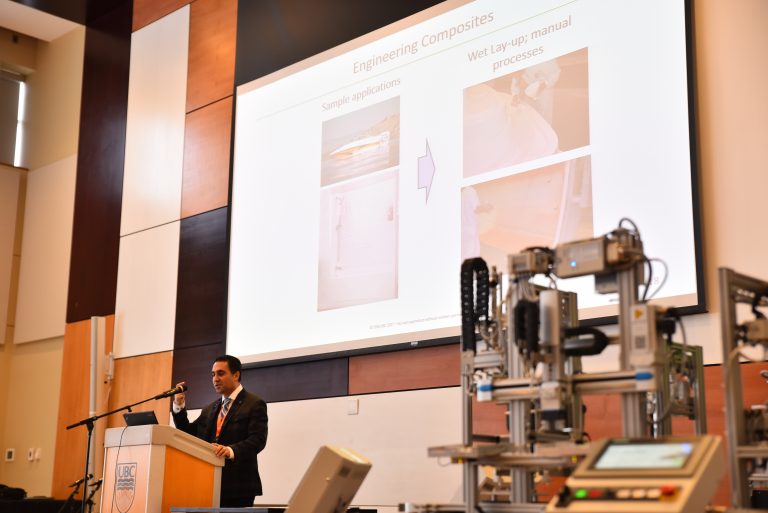Our vision:
It is evident from current trends in the composites industry that the next decade will continue to see an exponential trend in the use of advanced reinforcement and matrix materials, as prominent industrial sectors such as aerospace, automotive, marine, and construction have already rigorously committed to the use of advanced composites and related manufacturing technologies, to build products that are ever lighter and yet stronger. In particular, the widespread application of 2D and 3D fabric reinforcements and associated composite processing technologies has been driven by the ease of formability from two-dimensional planar shapes to complex three-dimensional parts, at low cost. An in-depth understanding, and consequently improvement, of forming processes of these materials, however, still requires complex modeling and simulation tools, which are often multi-scale and encompass multi-physics. In addition, sophisticated thermo-chemo-mechanical testing along with customized test fixtures are required to characterize the material component properties and validate the numerical models. Such tools are especially vital to replace the costly industrial trials of manufacturing processes and eventually to arrive at efficient strategies to mitigate defects and product failures. What has not been addressed thoroughly in this field, is the full integration of design and manufacturing efforts via linking respective modeling and simulation tools. Moreover, during multi-stage manufacturing processes, effective composite properties are developed simultaneously with the form of the final product, hence causing potential uncontrolled variations in the quality of the final part and/or its in-service performance, hence the need for development of probabilistic models.
Recognizing the above state of the art, our laboratory closely collaborates with manufacturers and other research groups nationally and internationally to find best practices to (1) model, predict and mitigate uncertainty and risk during forming of advanced composites, specially fabric wrinkling defects, (2) develop machine learning methods that can be used in large-scale manufacturing processes where uncertainty sources and the decisions made by engineers are interdependent and form complex Bayesian Networks, and (3) integrate the emerging Industry 4.0 and automation concepts into the composites field, whereby unprecedented customizability and real-time quality control of manufacturing processes and their full integration with design decisions are deemed imaginable for Factories of the Future.
We always welcome top students and visiting scholars to our group at CRN to join our consortium of over 100 industrial partners and experts to solve today’s problems in this fascinating world of composites. Please learn more about our network of activities here.
Sincerely,
Abbas S. Milani
